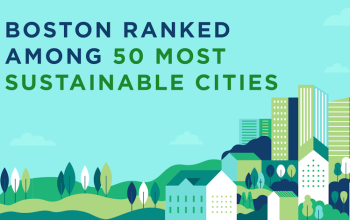The state of California has been a leader in environmental lobbying within America for decades due to their large population and economic prowess as well wide-ranging topography. The state government has adopted a suite of policies to encourage sustainability, combat climate change, preserve natural resources and develop a green economy.
This work is focused on the triple bottom lines of sustainability: protecting our environment to ensure a healthy and stable future, providing social equity by seeking fair opportunities for all residents regardless of origin or education level, while growing strong economy in order give space available resources that will only become more scarce as time continues.
Climate Change and Emissions Reduction
CA makes massive strides in carbon-neutral leadership. The goals are also ambitious — to cut greenhouse gas emissions by 40 per cent below 1990 levels, a generation’s goal for the next decade and full carbon neutrality in 25 years. To meet these goals, California enacted some of the following initiatives:
Cap-and-Trade Program
California — with a cap-and-trade program that has been in place since 2012 is among the most far-reaching emissions trading systems globally. Under this market system, a strict limit is set on the greenhouse gases that companies can emit and specifics permits are required for such emissions.
It’s an emissions trading scheme which offers companies financial incentives to reduce their emissions and invest in cleaner technologies. The funds which are generated from the cap and trade program goes into funding environmental projects throughout California.
Renewable Energy and Efficiency Measures
Hundreds of cities and counties across the United States have now pledged to meet all their electricity needs with carbon-free fuels by 2045, a goal that California has been meeting for over one year. Utilities are required to meet the state’s Renewables Portfolio Standard (RPS), which mandates a certain percentage of their power come from renewable sources such as wind, solar and geothermal.
California also has the most stringent energy-efficiency standards in the nation for buildings and appliances, which serve to both reduce total electricity consumption (and emissions associated with it) as well as lower peak demand.
Transportation Initiatives
Because transportation is the single largest source of greenhouse gas emissions in California, it is a key area for sustainability work. To cut emissions from transportation, the state aims to get more people into electric cars (EVs) and using public transit.
The state of California offers incentives to consumers who buy EVs and makes that more effective for automakers by using regulations called the Zero-Emission Vehicle (ZEV) program, which requires them to sell electric or hydrogen vehicles. Additionally, Commissioner Burns pointed out that California has poured resources into expanding its public transit options — as well as high-speed rail projects with the goal of easing dependence on single-occupancy vehicles.
Conservation and Management of Water
In California — a state plagued by drought and brimming with people — water is about as good as gold. The state government has taken up various initiatives in the promotion of sustainable water management and reduce wastage, these include —
California Sustainable Groundwater Management Act (SGMA)
The SGMA, a landmark state law in 2014 that set up processes for local agencies to establish groundwater sustainability plans. It helps make sure that groundwater remains a reliable resource for generations to come by preventing over-extraction.
Urban Water Conservation
In California, where state officials have set some of the most ambitious water conservation targets in the country at least not including Flint such as a goal to make each Californian use 20% less water by this year per capita urban water usage is down though California’s cities and towns are being required to cut back even more. It has also enforced drought periods and required residents as well businesses to use water more efficiently.
Not surprisingly, the State of California has implemented new strategies to reduce agricultural water use as agriculture consumes more of its valuable freshwater resource. Such an example is financing that allows farmers to transition from flood irrigation which greatly minimizes water usage with almost no impacts on their yields, to drip irrigations.
Waste Reduction and Recycling
According to waste management pros at Dumpster Rental Near Me Ontario, California has long been at the forefront of material waste reduction and recycling, targeting not only the diversion from landfill but also circular economy style reductions:
Goals for Recycling and Waste Diversion
AB 939 (the California Integrated Waste Management Act) mandates cities and counties to divert at least half of their municipal waste stream from landfills through recycling, composting or other methods. More recently, the state has adopted what sound like more ambitious targets: 75 percent waste diversion by 2025.
Extended Producer Responsibility (EPR)
The state of California, for example, has implemented EPR policy in which manufacturers are responsible for the post-consumer life-cycle management (take back) of their products. Than includes electronics recycling, used battery disposal and paint take-back programs that help curb waste while establishing a more sustainable design trend.
Single-Use Plastics Ban
California has been at the forefront of curbing single-use plastics with bans on plastic bags and other disposable and non-recyclable products. The state has also passed legislation mandating higher levels of recycled material in plastic products, which helps boost demand for recycled materials.
Promoting a Green Economy
Sustainability in California is not just an environmentally friendly enterprise but also serves as a job-gaining- and economic growth-strategy to attract new jobs in the green sector.
The state has also invested in worker training programs and education initiatives to ensure that workers have the skills needed for gainful employment in renewable energy, as well as other green industries such car manufacturing or clean technology. It ranks as the largest green economy in terms of jobs — from solar energy and electric vehicle manufacturing yards to sustainable agriculture.
Incentivize the Development of Clean Technology
So California has incentives for companies to innovate in clean technologies, providing grants and tax credits among other things to businesses performing research and development. Its vibrant clean tech sector has been attracting plenty of capital, helping to propel economic growth.
Natural Resources and Toxic Sites
California is to include social equity in its sustainability agenda in acknowledging that environmental issues frequently affect the poorer classes more the the richer ones.
California established programs to make sure everyone had clean air, water and all other environmental benefits. The California Environmental Protection Agency (CalEPA) has an EJ Task Force that is focused on a reduction of disparities and equitable distribution, so no communities are left behind without the benefit … or share in state resources for environmental protection.
While beefed up greenhouse gas emission policies are essential, California also has to continue adaption: investing in resilient infrastructure and upgrading community efforts that help the disadvantaged cope with climate change impacts. These programs include cooling centers on hot days, flood defenses and disaster preparedness for wildfires.
The State of California provides a model for a wide variety of actions that can be taken to advance sustainability, spanning many aspects from environmental challenges to economic and social justice issues. California is demonstrating that by setting ambitious goals and implementing forward-looking policies we can chart the future toward a more sustainable future. But to maintain its sustainability leadership, the state still needs more innovative tactics and a changing-of-the-guard when it comes to climate change, resource management and social equity.










